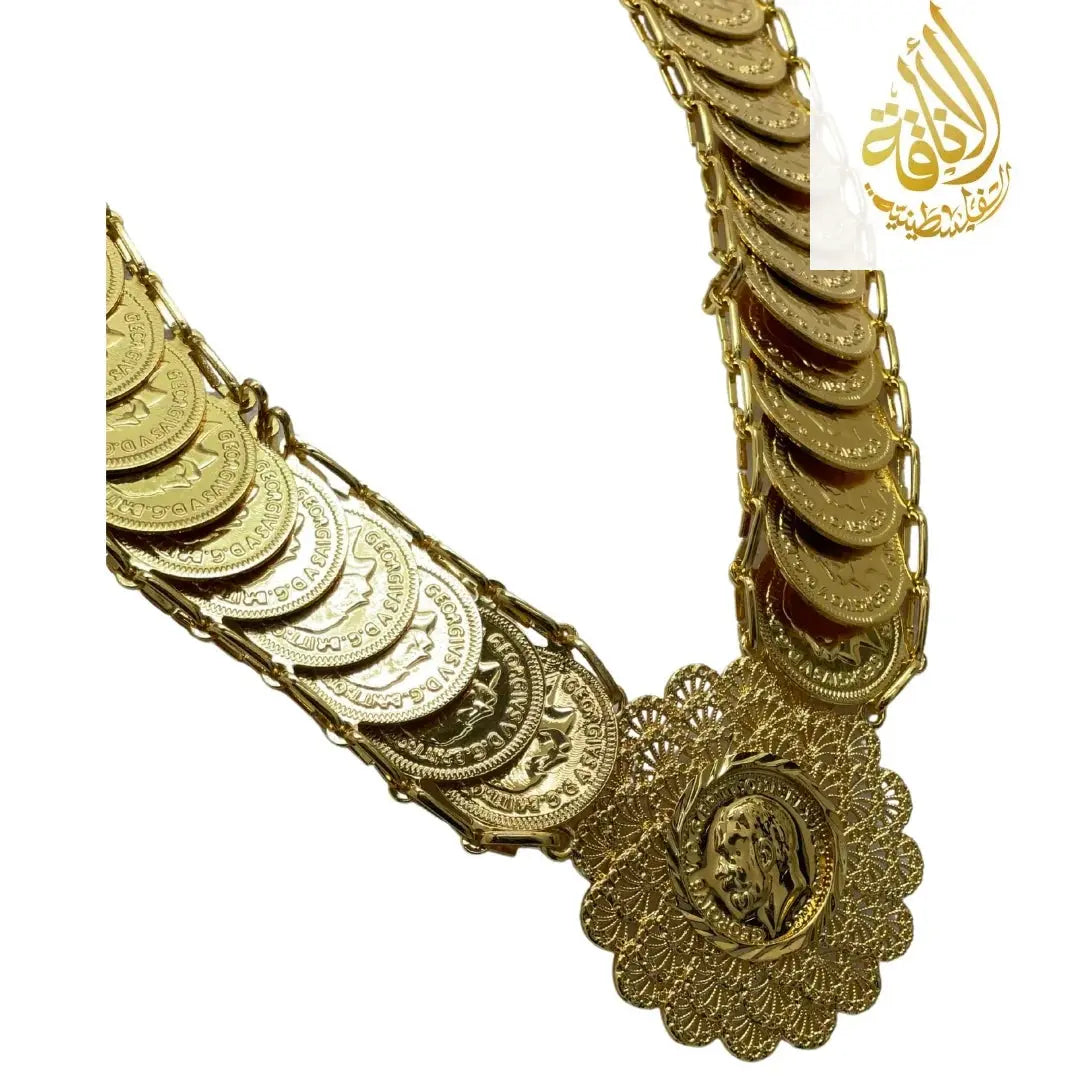Exploring the Palestinian Thobe - Cultural Significance of Thobe
The Palestinian thobe is more than just a piece of clothing; it is a symbol of cultural identity and heritage. For generations, this traditional garment has been worn across the Middle East, particularly in Palestine, where it holds deep cultural and historical significance. In this article, we will delve into the rich tapestry of the Palestinian thobe, exploring its origins, variations, and the role it plays in modern society. Understanding the thobe's multifaceted role in Palestinian life reveals not only its aesthetic appeal but also its profound connection to Palestinian history and identity.
The thobe's significance extends beyond fashion. It is a garment woven into the social and cultural fabric of Palestinian life, representing a link to ancestral traditions and communal memories. As we explore the thobe's journey from its historical roots to its modern adaptations, we will uncover how it continues to serve as a vessel of cultural expression and a symbol of resilience amidst ongoing socio-political challenges.
The Origins of the Palestinian Thobe
The Palestinian thobe, also known as a dishdasha, has roots that can be traced back centuries. Traditionally, it was hand-embroidered by women and served as a symbol of their craftsmanship and community. Each thobe is unique, with its embroidery patterns and colors often signifying the wearer's village of origin, social status, and personal stories. The thobe's origins are deeply embedded in the rural and agrarian lifestyle of historical Palestine, where each stitch and thread weaves together the narratives of the past.
Traditional Embroidery and Patterns
Embroidery is the heart of the thobe's design, and each stitch tells a story. The patterns vary from region to region, with certain motifs and colors being characteristic of specific areas. For instance, the Ramallah thobe is known for its rich red hues and geometric patterns, while the thobes from Hebron often feature dense, colorful floral designs. This diversity in design highlights the varied cultural landscape of Palestine, reflecting the unique histories and traditions of each community.
The embroidery techniques used in creating thobes have been passed down through generations, preserving an art form that is both beautiful and meaningful. The intricate patterns often incorporate symbols from nature, such as the cypress tree or the olive branch, each carrying its own cultural connotations. These designs are more than mere decoration; they are a visual language through which Palestinian women express their identity, creativity, and connection to the land.
The Making of a Thobe
Creating a traditional Palestinian thobe is a labor-intensive process. It begins with selecting high-quality fabric, often cotton or linen, which is then meticulously embroidered by hand. This process can take weeks or even months, depending on the complexity of the design. The result is a garment that is not only beautiful but also deeply personal, reflecting the identity and history of the wearer. The dedication and skill involved in making a thobe underscore its value as a treasured cultural artifact.
The craftsmanship required for a thobe is a testament to the artisans' dedication and expertise. Each garment is an individual masterpiece, often involving collaboration between family members and communities. The process of creating a thobe is also a communal activity, fostering relationships and cultural continuity. Through this meticulous art form, the thobe becomes a canvas for personal expression and a repository for familial and collective memories.
The Modern Palestinian Thobe
In recent years, the Palestinian thobe has experienced a resurgence in popularity, both within and outside of Palestine. Designers are now creating modern adaptations of this traditional garment, blending contemporary fashion trends with traditional elements. This revitalization reflects a broader movement of cultural preservation and innovation, where the past is honored while embracing the present.
Palestinian Thobe for Women
The thobe has always been a staple in women's wardrobes, and today, it continues to be a symbol of pride and cultural heritage. Modern adaptations often feature lighter fabrics and more subdued embroidery, making them suitable for everyday wear while still retaining their cultural significance. These contemporary designs are popular among younger generations, who wish to honor their heritage while embracing modern styles. The fusion of tradition and modernity in these garments speaks to the dynamic nature of cultural identity.
Young Palestinian women are at the forefront of this fashion evolution, using the thobe to express both individuality and cultural pride. By incorporating modern aesthetics, they are redefining what it means to wear a thobe in today's world. This evolution ensures that the thobe remains relevant and accessible, bridging generational divides and fostering a renewed sense of cultural identity.
The Blue Palestinian Thobe
Among the many variations, the blue Palestinian thobe has gained particular attention. This version typically features intricate blue embroidery on a white or cream background, creating a striking contrast. The blue thobe is often associated with the coastal regions of Palestine, where the color blue symbolizes the Mediterranean Sea. This version of the thobe serves as a reminder of the region's rich geographical and cultural diversity.
The blue thobe's popularity reflects an appreciation for the unique elements of Palestinian culture that resonate on both a local and global level. It has become a sought-after piece for those looking to connect with Palestine's coastal heritage, as well as for fashion enthusiasts interested in its aesthetic appeal. The blue thobe exemplifies how traditional garments can transcend their origins to become symbols of broader cultural narratives.
The Thobe's Role in Palestinian Culture
The thobe is more than just clothing; it is a cultural artifact that represents Palestinian identity and resilience. It is worn on special occasions such as weddings, festivals, and national celebrations, serving as a reminder of the wearer's roots and community. The thobe acts as a living embodiment of Palestinian history, a narrative thread connecting past and present.
A Symbol of Resistance and Identity
In the face of political and social challenges, the Palestinian thobe has become a symbol of resistance and cultural pride. Wearing a thobe is an assertion of Palestinian identity and a celebration of heritage in the face of adversity. It is a way for Palestinians to maintain a connection to their land and culture, despite the challenges they may face. The thobe becomes a silent protest, a way to assert one's identity and history amidst ongoing struggles.
The thobe's role as a symbol of resistance is evident in how it is used during demonstrations and cultural events. It represents a form of non-violent defiance, a way to honor and preserve Palestinian identity against external pressures. The act of wearing a thobe in such contexts transforms it from a simple garment into a powerful statement of solidarity and cultural resilience.
Passing Down Tradition
The art of thobe-making is often passed down from generation to generation, with mothers teaching their daughters the intricate embroidery techniques that have been used for centuries. This tradition not only preserves the craft but also strengthens familial and communal bonds, ensuring that the cultural significance of the thobe is never forgotten. The intergenerational transfer of knowledge ensures that the thobe remains a living tradition, adapting to changing times while preserving its core essence.
Passing down the art of thobe-making also serves as a form of cultural education, instilling a sense of pride and identity in younger generations. Through this practice, the thobe becomes a tangible link to ancestral wisdom and cultural continuity. It is a tradition that fosters a sense of belonging and community, reinforcing the thobe's role as a cultural cornerstone.
The Global Influence of the Palestinian Thobe
The beauty and cultural significance of the Palestinian thobe have transcended borders, capturing the attention of the global fashion industry. Designers around the world are incorporating elements of the thobe into their collections, introducing this traditional garment to new audiences. The thobe's journey into international fashion circles highlights the universality of its appeal and the power of cultural storytelling through clothing.
Thobe-Inspired Fashion
Fashion designers are increasingly drawing inspiration from the thobe, incorporating its intricate embroidery and flowing silhouettes into modern designs. This fusion of traditional and contemporary styles has helped to raise awareness of Palestinian culture and heritage on the global stage. The thobe's influence in fashion showcases its versatility and timeless elegance, appealing to a wide range of audiences.
The global fashion industry's embrace of thobe-inspired designs reflects a growing appreciation for cultural diversity and heritage. By incorporating elements of the thobe into their collections, designers are creating a dialogue between cultures, fostering a greater understanding and appreciation of Palestinian traditions. This exchange enriches the fashion world and highlights the thobe's role as a cultural ambassador.
Cultural Exchange and Appreciation
As the thobe gains international recognition, it serves as a catalyst for cultural exchange and appreciation. By showcasing the artistry and history of the Palestinian thobe, people around the world are gaining a deeper understanding of Palestinian culture and the rich heritage it represents. The global interest in the thobe underscores the value of cultural diversity and the importance of preserving traditional crafts.
The thobe's international journey fosters a dialogue about cultural heritage and identity, encouraging a more inclusive and interconnected world. As people learn about the thobe's history and significance, they are invited to appreciate the broader cultural narratives it represents. This exchange not only elevates the thobe as a fashion item but also as a symbol of cross-cultural understanding and respect.
Conclusion
The Palestinian thobe is a testament to the resilience and creativity of the Palestinian people. It is a garment that tells stories of history, identity, and cultural pride. Whether in its traditional form or modern adaptations, the thobe continues to be a powerful symbol of Palestinian heritage, bridging the past with the present and inspiring future generations to carry on its legacy. It is a living testament to the enduring spirit of a people and their rich cultural tapestry.
As we continue to explore and appreciate the cultural significance of the thobe, we honor the craftsmanship and stories of those who have worn and created this iconic garment throughout history. The thobe is not just a piece of clothing; it is a living representation of a rich cultural tapestry that continues to thrive today. Through its threads, the thobe weaves a narrative of identity, resilience, and connection, reminding us of the power of cultural heritage in shaping our world.




